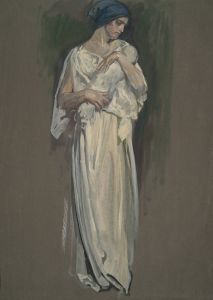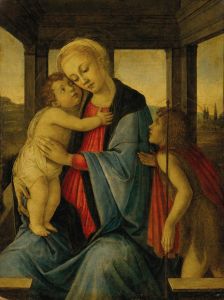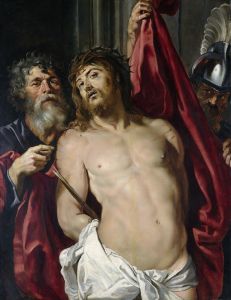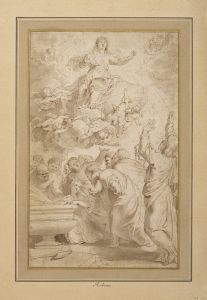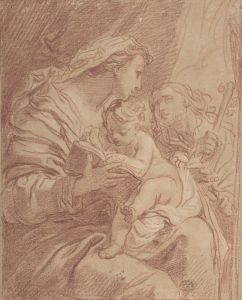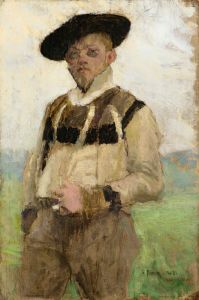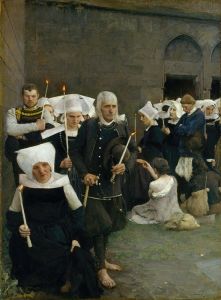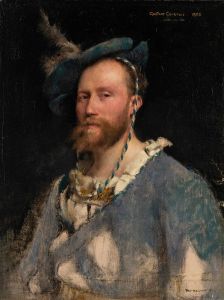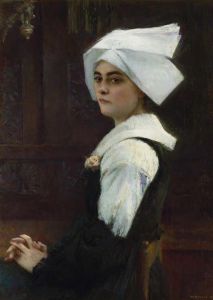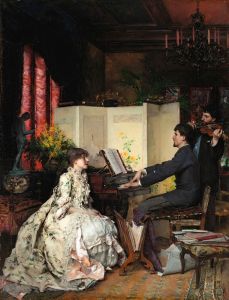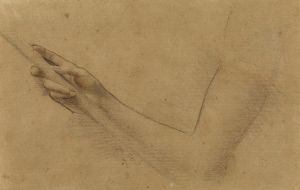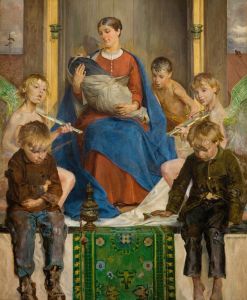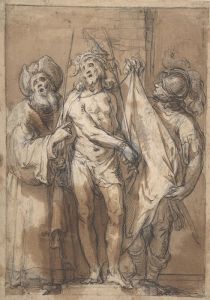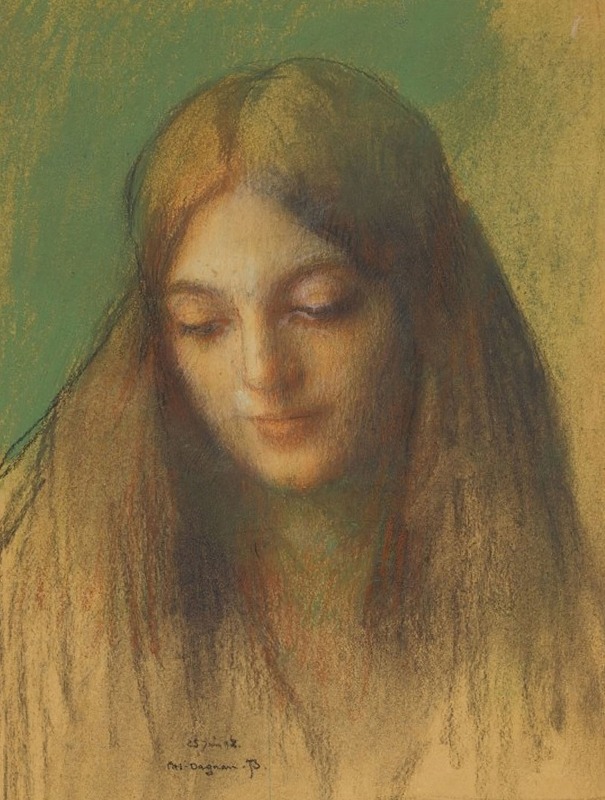
Madonna
A hand-painted replica of Pascal-Adolphe-Jean Dagnan-Bouveret’s masterpiece Madonna, meticulously crafted by professional artists to capture the true essence of the original. Each piece is created with museum-quality canvas and rare mineral pigments, carefully painted by experienced artists with delicate brushstrokes and rich, layered colors to perfectly recreate the texture of the original artwork. Unlike machine-printed reproductions, this hand-painted version brings the painting to life, infused with the artist’s emotions and skill in every stroke. Whether for personal collection or home decoration, it instantly elevates the artistic atmosphere of any space.
Pascal-Adolphe-Jean Dagnan-Bouveret was a prominent French painter associated with the Naturalist movement, known for his detailed and realistic portrayals of everyday life and religious themes. One of his notable works is "Madonna," a painting that exemplifies his skill in capturing the human form and emotion with meticulous attention to detail.
Dagnan-Bouveret was born on January 7, 1852, in Paris, France. He studied at the École des Beaux-Arts under the tutelage of Jean-Léon Gérôme, a master of academic art. Dagnan-Bouveret's early works were influenced by the Realist movement, and he became known for his ability to depict scenes with a high degree of realism and emotional depth. His works often featured religious and genre subjects, reflecting his interest in both contemporary life and spiritual themes.
The painting "Madonna" is a testament to Dagnan-Bouveret's ability to blend realism with a sense of the divine. While specific details about the creation and current location of "Madonna" are not widely documented, it is consistent with his oeuvre that the painting would feature a serene and contemplative depiction of the Virgin Mary. Dagnan-Bouveret's religious works often convey a sense of intimacy and reverence, capturing the spiritual essence of his subjects.
Dagnan-Bouveret was known for his use of light and color to enhance the emotional impact of his paintings. In "Madonna," it is likely that he employed a soft palette and gentle lighting to create a tranquil and sacred atmosphere. His attention to detail would be evident in the delicate rendering of facial expressions and the careful depiction of textures, such as the folds of fabric and the softness of skin.
Throughout his career, Dagnan-Bouveret received numerous accolades for his work. He exhibited regularly at the Salon, the official art exhibition of the Académie des Beaux-Arts in Paris, where he gained recognition for his technical skill and artistic vision. His paintings were well-received by both critics and the public, and he was awarded several prestigious honors, including the Grand Prix at the Exposition Universelle in 1889.
Dagnan-Bouveret's influence extended beyond his own work, as he played a significant role in the development of Naturalism in French art. His commitment to depicting reality with precision and empathy inspired a generation of artists who sought to capture the world around them with honesty and sensitivity.
While "Madonna" is just one example of Dagnan-Bouveret's religious paintings, it reflects his broader artistic philosophy and his ability to convey profound emotion through his art. His legacy as a master of Naturalism and a painter of both the sacred and the everyday continues to be celebrated in the art world.
In summary, "Madonna" by Pascal-Adolphe-Jean Dagnan-Bouveret is a work that exemplifies the artist's skill in combining realism with spiritual themes. Though specific details about this painting are limited, it remains a part of Dagnan-Bouveret's esteemed body of work, showcasing his ability to capture the essence of his subjects with technical precision and emotional depth.





